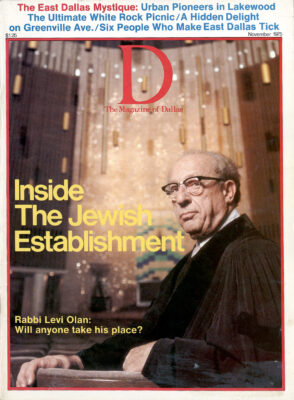Since the Republicans invented Fiscal Responsibility, politicians have tended to be a little weird about taxes. Take the city’s recent 4.5 cent ad valorem tax hike.
City Manager George Schrader had proposed a 6.5 cent increase, calculated to keep government services at their 1974 level. But some members of the council, upset that the city’s first tax hike in four years fell in their terms of office, decided to exercise a little fiscal responsibility, just for show.
They proceeded to cut $2.5 million out of Schrader’s proposed budget, lowering the increase by two cents. In the process, they hacked the transit and parks and recreation departments’ budgets nearly beyond recognition. As the council was proclaiming in self-satisfied tones that at least it had “taken some of the sting” out of the increase, a member of the transit board announced the cuts would probably cause an increase in bus fare, and Sidney Stahl, new president of the parks and recreation board, gloomily predicted that his department might have to begin charging admission to some museums at Fair Park.
Moreover, the ink had hardly dried on the new budget, when some members of the city staff prophesied that the last minute cuts in the 1975 budget might force another tax increase in 1976.
There were some serious omens in this year’s tax hike. It was not simply a matter of holding, or not holding the line. This year’s tax hike, in many ways, was caused by immutable forces of municipal economics.
The problem was not simply malignant inflation. It takes at least two forces to create a crunch. The real rub was that the ad valorem tax base couldn’t keep up with the rising cost of government. Since the early Sixties, the cost of city government has been rising an average of eight per cent a year; the land tax base has been limping along behind, increasing at only three per cent a year.
That kind of slack is known as The Great Flattening Tax Base, an ailment which normally strikes the urban body as middle age approaches. The causes of the disease are as obvious as they are incurable. As a city matures, sooner or later it begins to run out of raw land. With less and less raw land on which to build homes, shopping centers, apartments, there are fewer and fewer quantum leaps in appreciation of taxable city land. And fewer and fewer possible tax dollars.
During the past ten years, Dallas entered the primary stage of the illness. As of this year, the city is three fourths “built,” with some 40,000 acres of raw land remaining of a total of 192, 000. Concurrent with the diminishing of raw land is a loss of population from the city to the suburbs. Less and less supply, less and less demand.
This flattening process has been accelerated during the past few years by a horrendous slump in the construction industry. Single family housing starts this year are barely half what they were last year, and townhouse starts have dipped from 116 in the first half of last year to just seven so far this year. When and if the construction industry snaps out of its slump, the tax base will perk a little, but as Assistant City Manager Jim Favour says:
“The days of a couple of big shopping centers and a couple of big housing subdivisions starting each year in the city limits are drawing to an end. It’s clear that off in the future we must decrease our dependence on the ad valorem tax.”
Favour is quick to point out that the ad valorem tax can still be a good performer, and that dwindling revenue sharing funds and other factors did as much as, if not more than, the flattening tax base to spawn this year’s increase. “When you think about how bread and meat and milk have gone up, 4.5 cents increase in taxes is really not all that much.”
He adds that Dallas’ dependence on the ad valorem tax is not total. $100 million or so of the city’s $270 million budget is derived from land taxes; the remainder comes from city sales tax, water and sanitation fees, municipal court fines and miscellaneous sources. As long as these sources of municipal income continue to grow, the city can float along.
In the future, though, complete obsolescence of the ad valorem tax can only be forestalled by regeneration of declining properties, particularly in the inner city. Which raises an interesting paradox, since abatement of ad valorem taxes has long been thought to be a key tool in stimulating inner city redevelopment. In that sense, the ad valorem tax may be asked by the turn of the century to save its own life.
Now for a little good news: taxpayers in Dallas are still a helluva lot better off than in other cities. As of 1973, Dallasites were paying a total of $493 in land taxes per year (city, school, county) on a $20,000 home (if you could find one), compared to $632, not counting state and local income tax, in New York, $996 in Boston, $1188 in Buffalo and $1916 in Newark. The future may be a little bleak and uncertain, but the crisis is nowhere in sight.
Related Articles

Home & Garden
A Look Into the Life of Bowie House’s Jo Ellard
Bowie House owner Jo Ellard has amassed an impressive assemblage of accolades and occupations. Her latest endeavor showcases another prized collection: her art.
By Kendall Morgan

Dallas History
D Magazine’s 50 Greatest Stories: Cullen Davis Finds God as the ‘Evangelical New Right’ Rises
The richest man to be tried for murder falls in with a new clique of ambitious Tarrant County evangelicals.
By Matt Goodman

Home & Garden
The One Thing Bryan Yates Would Save in a Fire
We asked Bryan Yates of Yates Desygn: Aside from people and pictures, what’s the one thing you’d save in a fire?
By Jessica Otte


